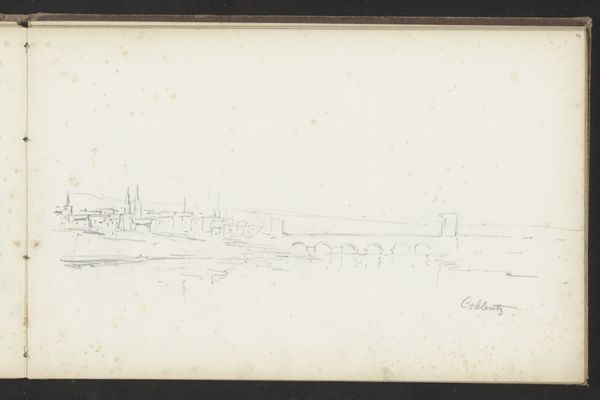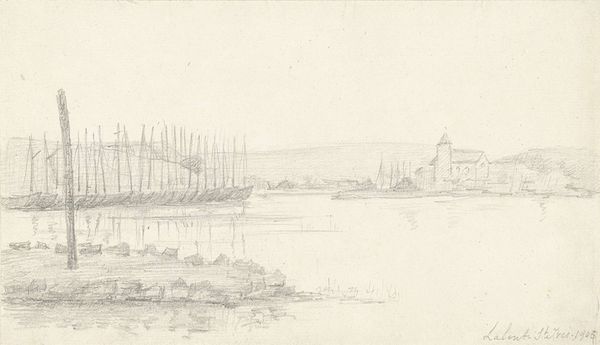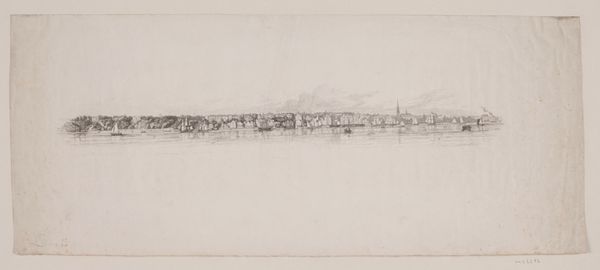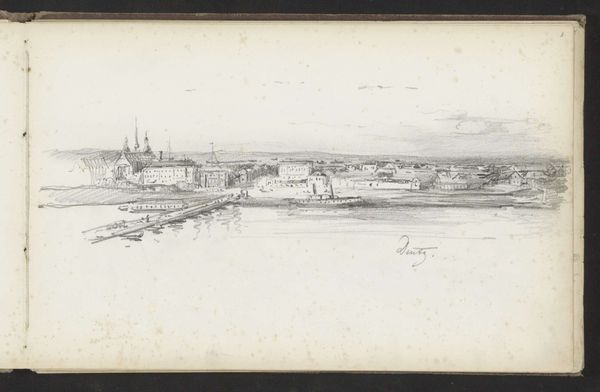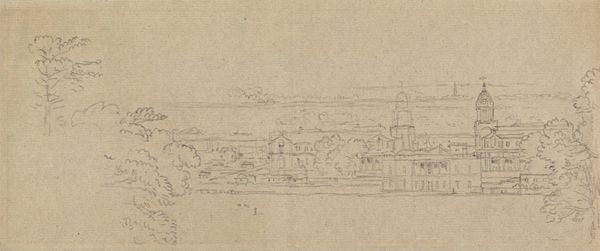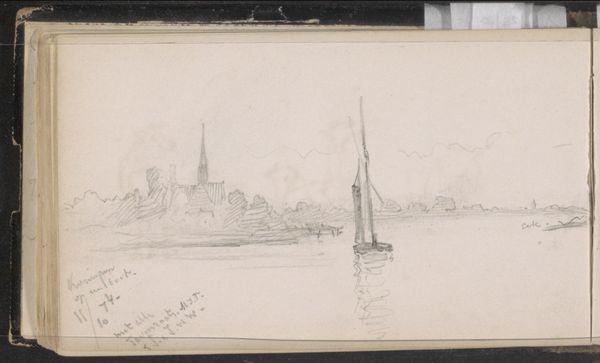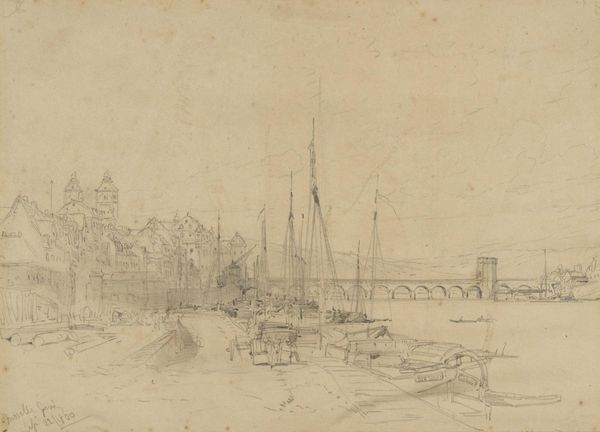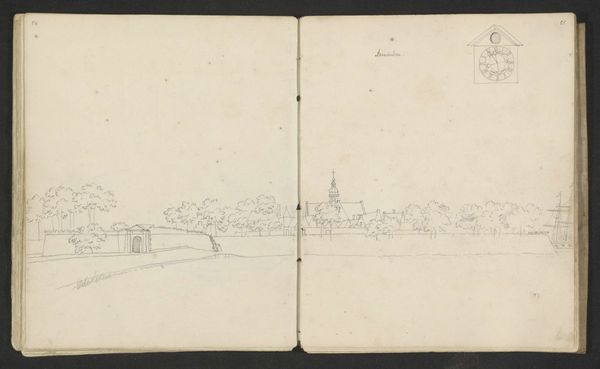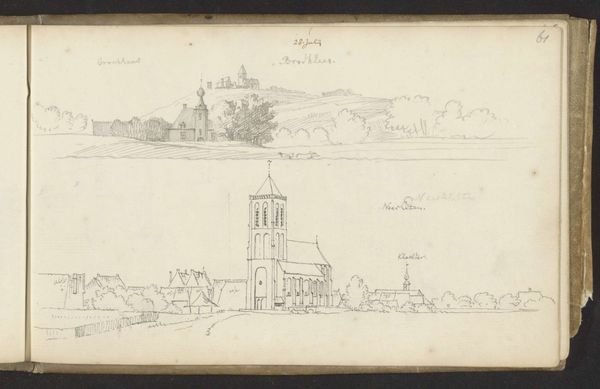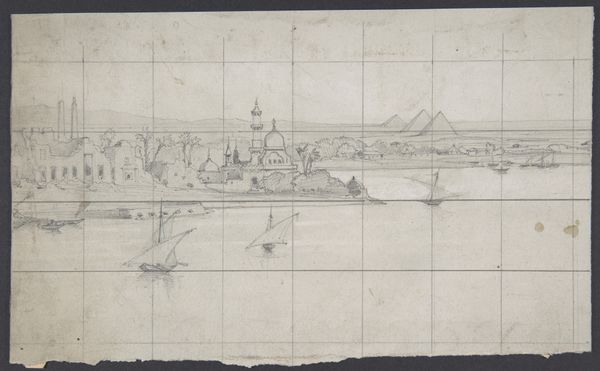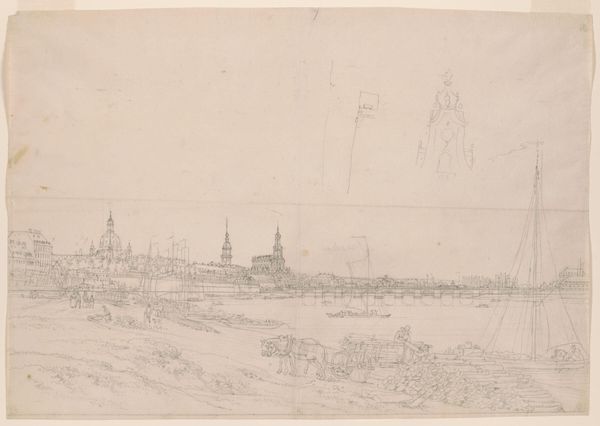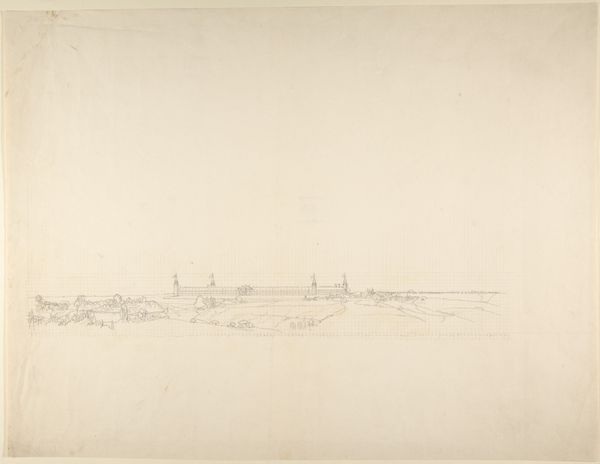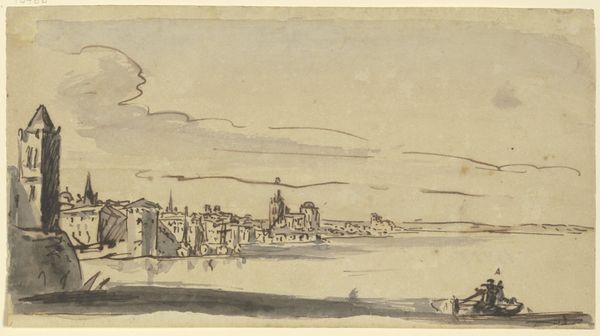
drawing, pencil
#
drawing
#
landscape
#
pencil
#
cityscape
#
realism
Dimensions: height 184 mm, width 282 mm
Copyright: Rijks Museum: Open Domain
Willem Cornelis Rip made this pencil drawing, titled 'View of Arnhem from the Berg', in the Netherlands. We can estimate the period from the latter half of the 19th century to the early 20th century. Here, the artist captures the town of Arnhem, dominated by its church, stretching along the Rhine. In the distance, the chimneys of factories hint at the industrial development of the area, connected via a bridge. What does it mean to depict this particular view at this moment in time? Rip seems to be placing Arnhem and its church within a modernizing economic landscape. The artist’s choice to include factories in the background suggests a commentary on the changing social and economic structures of the Netherlands. Was he aware of how new industry challenged existing social norms and institutions? To understand Rip’s intentions better, a historian might delve into local archives, studies of Dutch industrialization, and artistic circles. The meaning of art, as we see, is always contingent on its social and institutional context.
Comments
No comments
Be the first to comment and join the conversation on the ultimate creative platform.
